I’m thrilled to share why Marvin Elevate windows have become my top pick for transforming my home. These windows blend style, durability, and efficiency in a way that’s tough to beat.
After living with them for a while, I can tell you they’re worth every penny for the comfort and aesthetic they bring. Whether you’re upgrading an old house or building new, Marvin Elevate windows deliver a premium experience that makes your space feel alive.
Trust me, you’ll love how they elevate your home’s vibe and performance.
My Journey With Marvin Elevate Windows
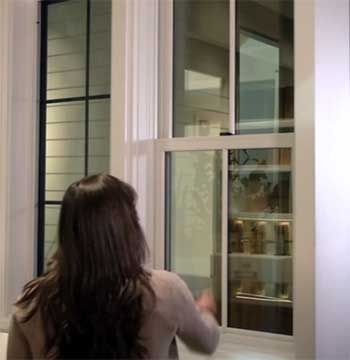
When I decided to replace the old, drafty windows in my 1970s colonial, I was overwhelmed by choices.
My home was chilly in winter, stuffy in summer, and the windows looked like they’d seen better days.
I wanted something that would last, look sharp, and keep my energy bills in check.
After researching, I landed on Marvin Elevate windows, and I haven’t looked back.
The installation was a breeze, handled by a local contractor who knew Marvin’s products inside out.
I chose the Elevate casement windows with a sleek black exterior and wood interior to match my home’s modern-traditional vibe.
The moment they went in, I noticed a difference. The rooms felt brighter, thanks to the larger glass area, and the house was quieter—no more hearing every car that passed by.
I remember standing in my living room, admiring how the windows framed the backyard like a piece of art. They felt sturdy, too, with smooth cranks that made opening and closing a joy.
What struck me most was the energy efficiency. My old windows let in drafts that made my heater work overtime. With Elevate, my home stays cozy without the furnace running constantly.
Last winter, I noticed my energy bill dropped by about 15%, which was a pleasant surprise. The windows’ Ultrex fiberglass exterior felt like a fortress against the elements, and the wood interior added warmth that made my space feel inviting.
I’ve even gotten compliments from neighbors who noticed the upgraded curb appeal. My experience with these windows has been nothing short of transformative, and I’m excited to break down why they’re so special.
What Makes Marvin Elevate Windows Stand Out?
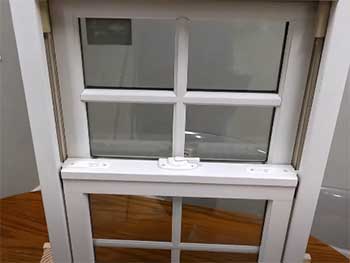
Marvin Elevate windows are a unique blend of form and function, and I’ve come to appreciate their thoughtful design.
The key feature is the Ultrex fiberglass exterior, a material Marvin pioneered.
It’s incredibly strong—eight times stronger than vinyl, by some measures—and resists warping, cracking, or fading, even in harsh weather.
I live in an area with freezing winters and humid summers, and these windows have held up flawlessly.
The wood interior, typically pine, adds a touch of elegance you can stain or paint to match your style. I went with a cedar stain, and it’s like the windows were custom-made for my home.
Another standout is the energy efficiency. The Elevate line uses Low-E glass with argon gas, which keeps heat in during winter and out during summer. I’ve noticed my home maintains a steady temperature, which is a game-changer for comfort.
The windows also come in six exterior colors, and I love how the acrylic finish on mine hasn’t chipped or faded. Plus, the slim frames maximize glass area, letting in more natural light than my old windows ever did. It’s like my living room got a brightness boost overnight.
The customization options are just enough to feel personal without being overwhelming. You can choose from casement, double-hung, or awning styles, among others, and add features like divided lites for a classic look.
I opted for a simple grid pattern, and it gives my home a timeless charm. Marvin’s attention to detail, like the foam-fitted weatherstripping, ensures a tight seal that keeps drafts at bay. These windows feel like they were built with care, and they’ve made my home a better place to live.
Pros of Marvin Elevate Windows
- Unmatched Durability
I can’t overstate how tough these windows are. The Ultrex fiberglass exterior is a beast—it’s stronger than steel and doesn’t budge under extreme temperatures. I’ve seen no signs of warping or cracking, even after a brutal winter storm.
This durability means I won’t be replacing these windows anytime soon, which is a relief after dealing with my old, flimsy ones.
- Energy Efficiency That Saves Money
The Low-E glass and argon gas combo is a money-saver. My energy bills have dropped noticeably since installing Elevate windows, and my home feels more comfortable year-round.
The U-factor ratings, typically around 0.27-0.28 for casement windows, are impressive, meaning these windows keep heat where it belongs. You’ll feel the difference in your wallet and your home’s coziness.
- Aesthetic Appeal
These windows are gorgeous. The wood interior adds warmth, and the sleek fiberglass exterior gives a modern edge. I love how the larger glass area brightens my rooms, making them feel bigger and more inviting.
With six exterior color options and customizable interior finishes, you can make these windows fit any home style, from classic to contemporary.
- Low Maintenance
Maintaining these windows is a breeze. The fiberglass exterior doesn’t need painting or scraping, and the acrylic finish resists scratches and fading. I just wipe them down with a damp cloth now and then, and they look brand new.
The wood interior needs occasional touch-ups if you stain it, but it’s minimal compared to full-wood windows.
- Smooth Operation
The hardware on Elevate windows is top-notch. My casement windows open and close effortlessly, and the cranks feel solid. Even after daily use, there’s no sticking or wobbling.
It’s a small thing, but it makes using the windows a pleasure, especially when I want to let in a breeze.
Cons of Marvin Elevate Windows
- Higher Price Point
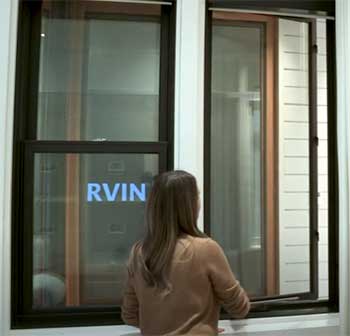
Let’s be real—these windows aren’t cheap.
I paid more for Elevate than I would have for vinyl options, and the cost can sting if you’re on a tight budget.
For my 10-window project, the price was higher than some competitors, but I justified it with the long-term savings and quality.
If you’re looking for budget-friendly, you might need to explore other brands.
- Limited Color Options
While the six exterior colors are nice, I wished for more variety. Some competitors offer a broader palette, which could be a drawback if you’re set on a specific shade.
I love my black frames, but if you’re picky about colors, you might feel a bit constrained.
- Longer Lead Times
Getting my windows took longer than expected. Marvin’s customization and high demand can mean wait times of several weeks. I planned ahead, but if you’re in a rush, this could be a hassle.
Make sure you talk to your installer about timelines early on.
- Warranty Limitations
The warranty is solid—20 years on glass, 10 years on components—but it’s not as comprehensive as some competitors. Labor isn’t covered, which surprised me, and coastal environments get a shorter warranty on the exterior finish.
It’s still transferable, which is great if you sell your home, but I expected a bit more coverage for the price.
Maintenance Tips For Marvin Elevate Windows
- Cleaning the Glass: Keeping the glass sparkling is simple. I use a mix of water and mild dish soap with a soft cloth to clean mine every few months. Avoid abrasive cleaners or scrubbers—they can scratch the Low-E coating. For stubborn spots, a vinegar-water solution works wonders. Dry with a microfiber cloth to prevent streaks, and your windows will look pristine.
- Caring for the Fiberglass Exterior: The Ultrex fiberglass is low-maintenance, but I give mine a quick wipe with a damp cloth to remove dirt or pollen. Every six months, I check for any debris in the tracks or sills and clear it out with a soft brush. The acrylic finish is tough, so you don’t need to repaint or seal it, which saves time.
- Maintaining the Wood Interior: The wood interior needs a little love to stay beautiful. I stained mine, so I check for wear every year and touch up with a matching stain if needed. If you painted yours, a fresh coat every few years keeps it looking sharp. Keep humidity in check to prevent swelling—my dehumidifier in the basement helps with this.
- Inspecting Weatherstripping: The foam-fitted weatherstripping is a star, but I inspect it annually for wear. If it looks compressed or loose, I contact my installer for a replacement. It’s rare, but keeping the seal tight ensures energy efficiency. A quick vacuum of the tracks keeps everything functioning smoothly.
- Lubricating Hardware: The cranks and hinges on my casement windows stay smooth with a drop of silicone-based lubricant once a year. I avoid oil-based products, as they attract dust. A quick turn of the crank after lubricating ensures everything moves like butter. This small step keeps the hardware feeling new.
Comparing Marvin Elevate To Other Window Brands
- Feldco Windows
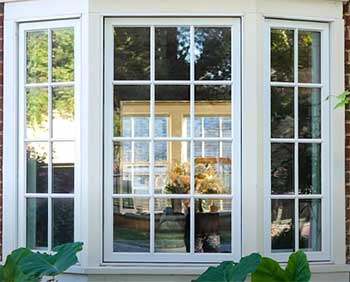
Feldco focuses on vinyl windows, which are budget-friendly but don’t match Elevate’s durability.
I looked at Feldco for my project, drawn by the lower price, but their vinyl frames felt flimsier compared to Elevate’s Ultrex fiberglass.
Vinyl expands and contracts with temperature changes, which can lead to leaks over time, something I haven’t worried about with Elevate.
Feldco’s energy efficiency is decent, but Elevate’s Low-E glass and argon gas outperform in my cold climate.
If you’re after affordability and don’t mind more upkeep, Feldco’s fine, but Elevate feels like a longer-lasting investment.
- American Craftsman Windows
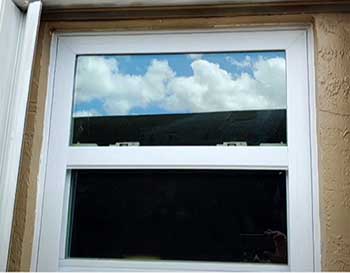
American Craftsman, sold through big-box stores, is another vinyl option I considered.
They’re dirt cheap, which is tempting, but the quality gap is noticeable.
The frames on American Craftsman windows felt less sturdy, and the warranty was shorter than Elevate’s.
I also found their designs basic, lacking the sleek look of Elevate’s fiberglass and wood combo.
Energy efficiency is okay, but Elevate’s U-factor ratings are better, and I’ve noticed real savings. For a quick fix or rental property, American Craftsman works, but Elevate’s premium build won me over for my forever home.
- Wincore Windows
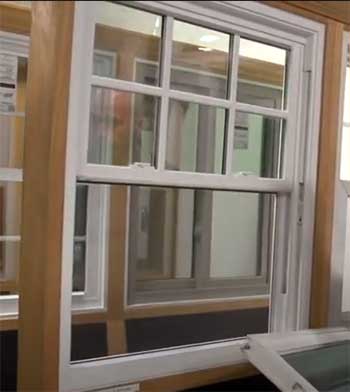
Wincore offers vinyl and some fiberglass options, but I found their fiberglass line less refined than Elevate.
Wincore’s windows are solid for the price, but the fiberglass didn’t feel as robust as Ultrex, and the color options were limited.
I also heard mixed reviews about their customer service, whereas my Marvin installer was responsive.
Wincore’s energy ratings are competitive, but Elevate’s insulation and larger glass area give it an edge in light and comfort.
If you’re balancing cost and quality, Wincore’s a contender, but Elevate’s craftsmanship tipped the scale for me.
- CGI Windows
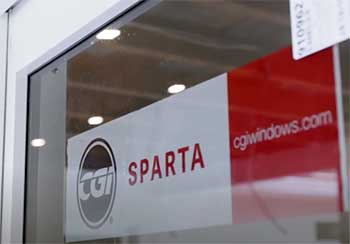
CGI specializes in impact-resistant windows, which I didn’t need in my inland location.
Their fiberglass frames are tough, but Elevate’s Ultrex still feels superior in terms of finish and strength.
CGI’s designs cater to coastal homes, with a focus on hurricane protection, so they’re less versatile for my traditional aesthetic.
Price-wise, CGI can be as expensive as Elevate, but I found Elevate’s wood interior and customization more appealing.
If you live in a storm-prone area, CGI might be your pick, but Elevate suited my needs better.
Frequently Asked Questions (FAQ)
Choosing between Marvin Ultimate and Elevate depends on your priorities. Ultimate, part of the Signature collection, is the premium choice with fully customizable wood frames and aluminum cladding. I found Ultimate’s craftsmanship unmatched, but it’s pricier and requires more maintenance on the wood interior. Elevate, with its fiberglass exterior and wood interior, offers similar durability at a lower cost. For my home, Elevate’s balance of affordability and low maintenance was perfect, but if you want endless design options and don’t mind the upkeep, Ultimate might be your pick.
Marvin Elevate windows sit in the mid-to-high price range. For my project, they cost more than vinyl options but less than Marvin’s Ultimate line. Expect to pay a premium compared to brands like Feldco or American Craftsman, but the durability and energy savings justify the cost. I saw a noticeable drop in my energy bills, which softened the upfront sting. If you’re on a tight budget, they might feel steep, but for long-term value, they’re a smart investment.
Marvin Elevate uses Ultrex fiberglass with a smooth acrylic finish and wood interior, offering superior durability and a transferable warranty. Pella’s Impervia line uses Duracast fiberglass with a grainy, powder-coated finish, which I found less refined. Elevate includes Low-E with argon as standard, while Pella offers it as an upgrade. I also liked Elevate’s sleeker look and better resale value due to the warranty. Pella has more style options, but Elevate’s strength and efficiency made it my choice.
Marvin and Andersen are neck-and-neck, but it depends on your needs. Marvin’s Elevate uses Ultrex fiberglass, which I found stronger and more durable than Andersen’s Fibrex, a wood-vinyl blend that can fade. Elevate’s wood interior feels warmer than Andersen’s vinyl-wrapped options, and its energy efficiency slightly outperformed in my home. Andersen offers more colors and shorter lead times, which is tempting. For me, Elevate’s longevity and aesthetic tipped the scale, but Andersen’s a solid choice if customization is your priority.
Conclusion: Elevate Your Home With Marvin
I can’t recommend Marvin Elevate windows enough. They’ve transformed my home with their durability, energy efficiency, and stunning look. The Ultrex fiberglass and wood interior create a perfect balance of strength and style, making every room feel brighter and cozier.
You’ll love the low maintenance and the savings on your energy bills. If you want windows that last and make your home stand out, Marvin Elevate is the way to go. Trust me, they’re an investment you won’t regret.
